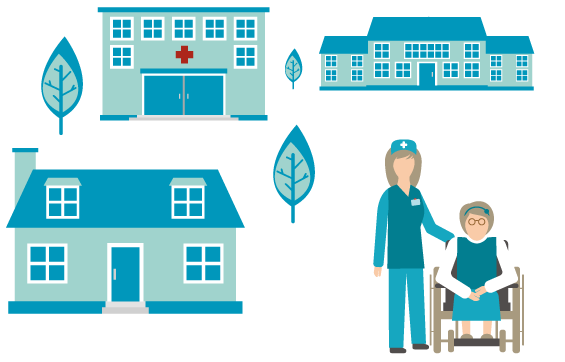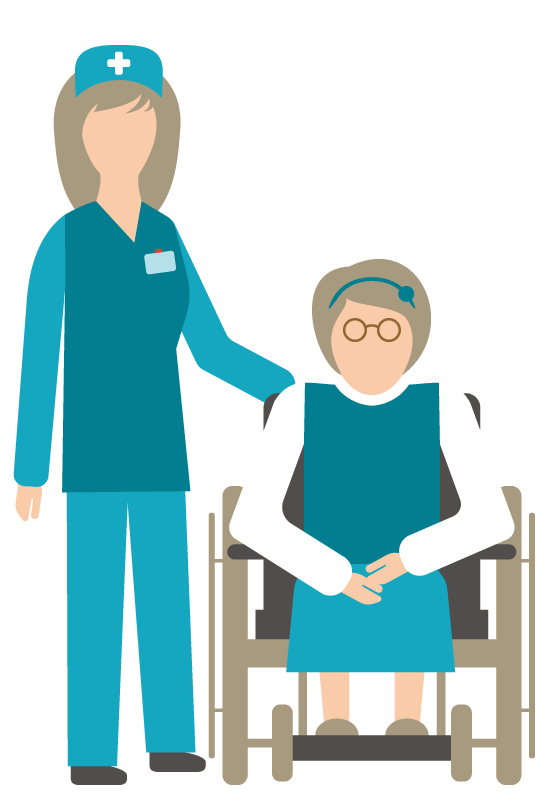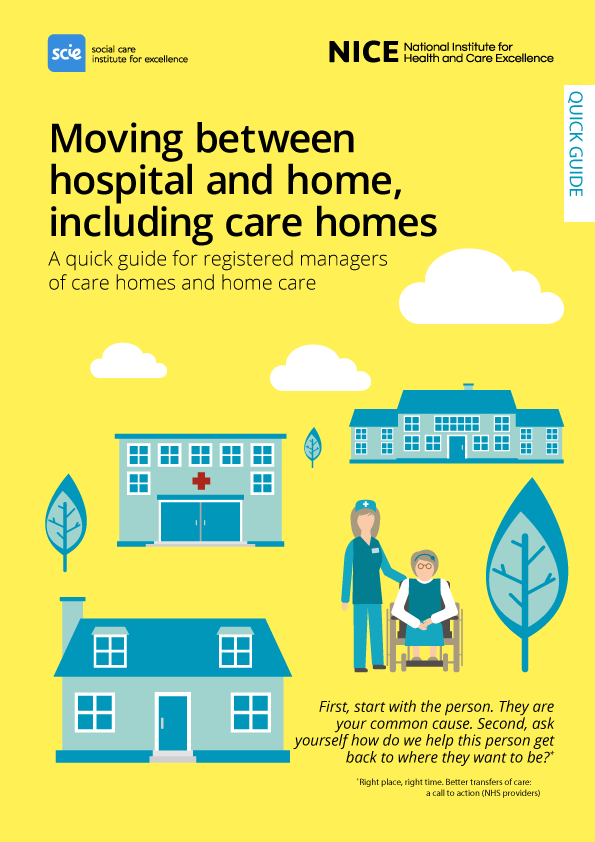A quick guide for registered managers of care homes and home care
When people with care and support needs transfer into and out of hospital, good communication and integrated services are essential.
Without this, people can experience:
- unmet care and support needs
- avoidable hospital readmissions
- avoidable admissions to care
- delayed transfers of care.
Registered managers and their teams have an important role to play as part of the community-based team supporting people transferring in and out of hospital.
First, start with the person. They are your common cause. Second, ask yourself how do we help this person get back to where they want to be?

What you can do

Before admission
Think about who might be at risk of hospital admission and support them to make a care plan in case this happens. Make sure you are familiar with the hospital’s discharge planning protocols and processe

At admission
Make sure the admitting team have all the information they need about the person. This might include:
- care plans, including any preferred routines, and advance care plans
- communication and accessibility needs
- current medicines
- triggers to behavioural issues
- family, including carers and next of kin
- housing issues
- preferred places of care.

During hospital stay
Keep in touch with the hospital team and share any information that might affect discharge planning. Work with the discharge coordinator to help develop the discharge plan.

After discharge
Keep in touch with people who are supported at home and make sure they know how to contact your service if they need to.
Red bag scheme
This scheme is one example of how to make sure the person takes and brings back everything they need. The red bag might include:
- personal belongings
- medicines
- ‘This is me’
- current care plan
- discharge summary.
Developed by Sutton Homes of Care Vanguard (a NICE shared learning example). You may be able to participate in a similar scheme run by your local authority or CCG.

What you can expect from the hospital team
Discharge planning principles
- people experience continuity of care
- decisions about long-term care are only made after a crisis is resolved
- discharges are planned and coordinated, despite any pressure on beds.
1. Discharge planning from the point of admission
- assess the person’s current and ongoing health and social care needs
- refer to existing care plans
- select a hospital-based team according to the person’s assessed needs.
2. Contact from a named discharge coordinator, who should:
- agree a discharge plan with the person and the community-based team
- arrange follow-up care and any specialist equipment and support
- agree the plan for ongoing treatment and support with the community team and maintain regular contact with them.
3. A copy of the discharge plan which should include:
- details about the person’s condition
- information about medicines
- contact information for after discharge
- arrangements for social and health care support, including family support
- details of other useful services.
What you should expect after discharge

People who need end-of-life care or have complex needs should have details of who to contact in case problems with medicines or equipment occur within 24 hours of discharge.

If a person is at risk of readmission, the GP or community based nurse will telephone or visit them 24 to 72 hours after discharge.
Useful links
- NICE guideline: Transition between inpatient hospital settings and community or care home settings for adults with social care needs.
- NICE quality standard: Transition between inpatient hospital settings and community or care home settings for adults with social care needs.
- NHS England quick guide: Improving hospital discharge into the care sector.
- Sutton Homes of Care Vanguard: Hospital transfer pathway (red bag) (YouTube).
- Sutton Homes of Care Vanguard: The red bag pathway from a resident’s perspective (YouTube).
- Healthwatch: Safely home: what happens when people leave hospitals and care settings?
- Alzheimer's Society: This is me.
- The British Geriatric Society: Effective healthcare for older people living in care homes – British Geriatric Society

Download this guide
We've created a copy of this guide that you can print and share:
Moving between hospital and home, including care homes (PDF)
This content has been co-produced by NICE and the Social Care Institute for Excellence (SCIE). It is based on NICE’s guideline and quality standard on transition between inpatient hospital settings and community or care home settings for adults with social care needs